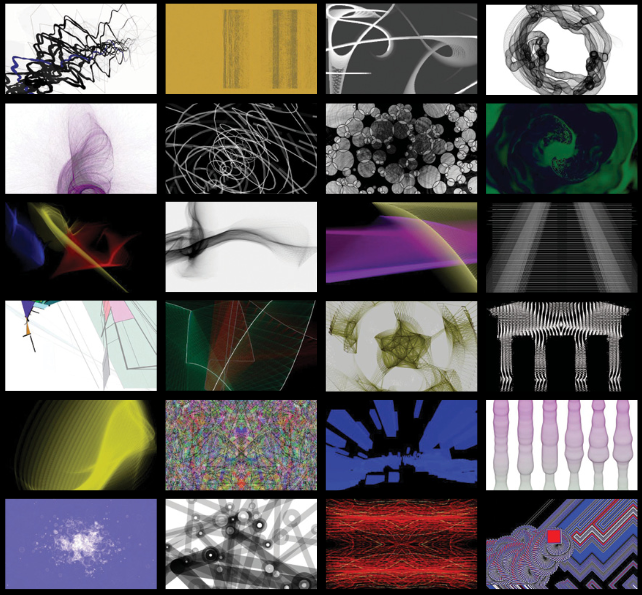Tekstitykset
you all my ideas about how the world operates and how I want to build my systems come through software for me software is the most natural medium to work so I'm Casey Reis I'm an artist educator open source developer software developer for me things start off with drawing and sketching I think like they often do but then from there they they progress into into code so that's the process where you basically open up a text editor and start writing down your thoughts but instead of for example writing a poem or an essay or fiction the thoughts are more about organizing logic and procedures and in my case they always make images so it goes from an idea of what an image might be to some code that then then creates an image again at that point back and forth you pick one and then you make a lot of iterations on that and you find your way through it there's never really in any and goal but there's a lot of things that happen the original inspiration was my interest in this idea of emergence this idea of emergence is that you you put a few simple rules together and something comes out of that which is entirely unexpected and moves beyond what you could imagine those simple rules producing so if you're a composer the final piece she produces a score that is your your end piece and I think a lot of the instructions that I write or the software that I write is being a score and in the case of music performance you know every performance is different because the the performer injects their interpretation on top of that in my case every time the software is perform is performed differently in software by the computer and some elements unfold differently every time I think that's a really exciting way to work with computers because I mean stereotypically they're such calculating precise machines being able to allow unexpected things to happen it's an exciting way to work with they're both based on the first element element one and this is an example of with emergence how thing can be entirely just following the rules from the bottom up or you can impose constraints and see how that affects the growth and so they're both based on the same element which are simply just circles and the the way the process works is when the circles overlap you just draw a line between their centers and so all the lines that you see on these images are formed when two circles overlap but in this one the rule is they can only emerge from the center and on this one the rule is they emerge from this bisecting line on the page and so you can see the similarities and how they're based on the same thing but sort of the different qualities of the image by changing this one rule for me I use color sort of similarly I think about it as how sound is used in films you know if you're watching a film you know how to feel about a certain scene depending on the sound it can be either in contrast to what you're seeing or vice versa but in the last years I've been using mostly gray values and then doing small color experiments to sort of imbue a different emotion or give the give the work a different quality myself had been fry we've been developing this project in tandem processing as a programming language the basic way I'd like to explain it is we're really excited about software and programming as a medium for designers artists architects basically creative people to explore processing itself at its core it is very minimal but we built into this library system the last people to extend it and that's where the larger community has done amazing things with it it's being used in the film industry for doing special effects it's being used by students and graphic design programs for doing digital work that then becomes posters it's really become a tool that's used across so many fields that it's been a really interesting to see how it's allowed different people to collaborate together because they're using the same basic system the boundary between software and object has always been so far away and that's collapsing extremely rapidly at the moment you can now I can write a program for doing a 3d form I can export it in a certain format I can send it to a company and then a week later I can get back a package with a stainless steel object that is that form that I program I think that is extremely exciting most recently I've been getting really excited about collaborations I did a recent collaboration with a towel Rosener who's a london-based video artist for doing a 7,000 square foot projection on a new Frank Gehry building the project called chronograph so I've been moving away from screens and sort of moving into public space I'm gonna have so many ideas that I want to pursue now it's just a moment of huge transition you



